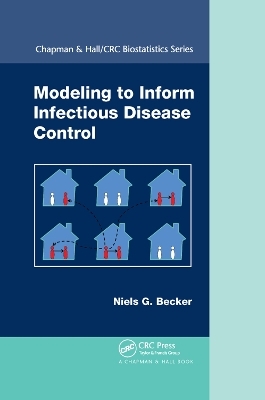
Modeling to Inform Infectious Disease Control
Chapman & Hall/CRC (Verlag)
978-0-367-37768-7 (ISBN)
Our experiences with the human immunodeficiency virus (HIV), severe acute respiratory syndrome (SARS), and Ebola virus disease (EVD) remind us of the continuing need to be vigilant against the emergence of new infectious diseases. Mathematical modeling is increasingly used in the management of infectious disease control as a way to assess interventions relatively quickly, cheaply, and safely. Modeling to Inform Infectious Disease Control shows readers how to take advantage of these models when developing strategies to mitigate infectious disease transmission.
The book presents a way of modeling as well as modeling results that help to guide the effective management of infectious disease transmission and outbreak response. It discusses the requirements for preventing epidemics and ways to quantify the impact of preventative public health interventions on the size and dynamics of an epidemic. The book also illustrates how data are used to inform model choice.
Accessible to readers with diverse backgrounds, this book explains how to gain insight into the management of infectious diseases through statistical modeling. With end-of-chapter exercises and glossaries of infectious disease terminology and notation, the text is suitable for a graduate-level public health course. Supplementary technical material is provided at the end of each chapter for readers with a stronger background in mathematics and an interest in the art of modeling. In addition, bibliographic notes point readers to literature in which extensions and more general results can be found.
Niels G. Becker is an emeritus professor of biostatistics at the Australian National University, where he was the director of the National Centre for Epidemiology and Population Health from 2007 until 2011. Dr. Becker has published more than 150 peer-reviewed articles. His research interests include the control of infectious diseases, triggers of adverse health events, and the analysis of foodborne disease data.
Introduction. Minor outbreaks when infectives are homogeneous. Minor outbreaks in a community of households. Minor outbreaks when individuals differ. Transmission intensity function. Partially effective vaccines. Social distancing. Reducing epidemic size. Dynamics of infection incidence. Using data to inform model choice. Terminology and notation. References. Subject index.
| Erscheinungsdatum | 18.09.2019 |
|---|---|
| Sprache | englisch |
| Maße | 156 x 234 mm |
| Gewicht | 381 g |
| Themenwelt | Mathematik / Informatik ► Mathematik ► Angewandte Mathematik |
| Studium ► Querschnittsbereiche ► Epidemiologie / Med. Biometrie | |
| Studium ► Querschnittsbereiche ► Infektiologie / Immunologie | |
| ISBN-10 | 0-367-37768-3 / 0367377683 |
| ISBN-13 | 978-0-367-37768-7 / 9780367377687 |
| Zustand | Neuware |
| Haben Sie eine Frage zum Produkt? |
aus dem Bereich


